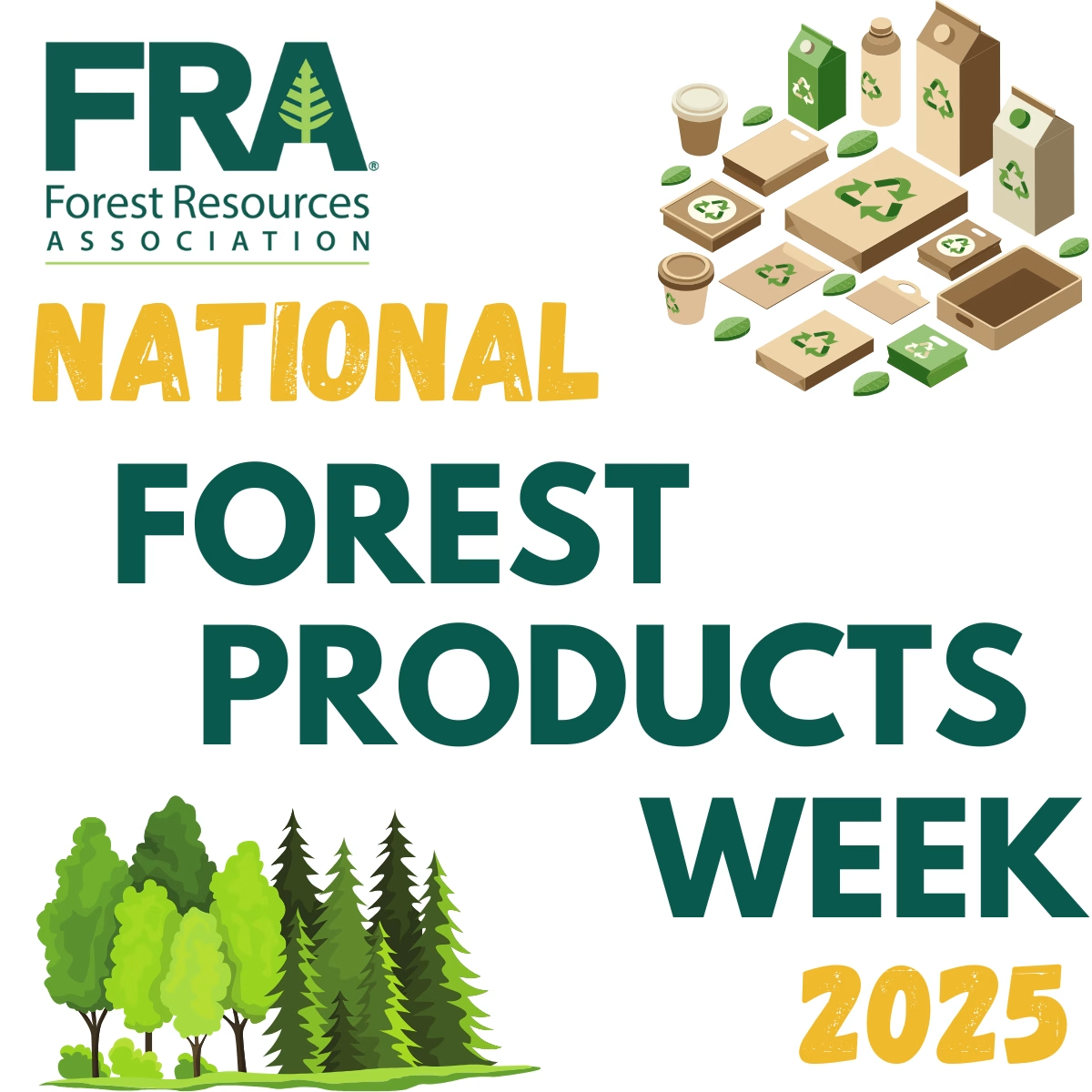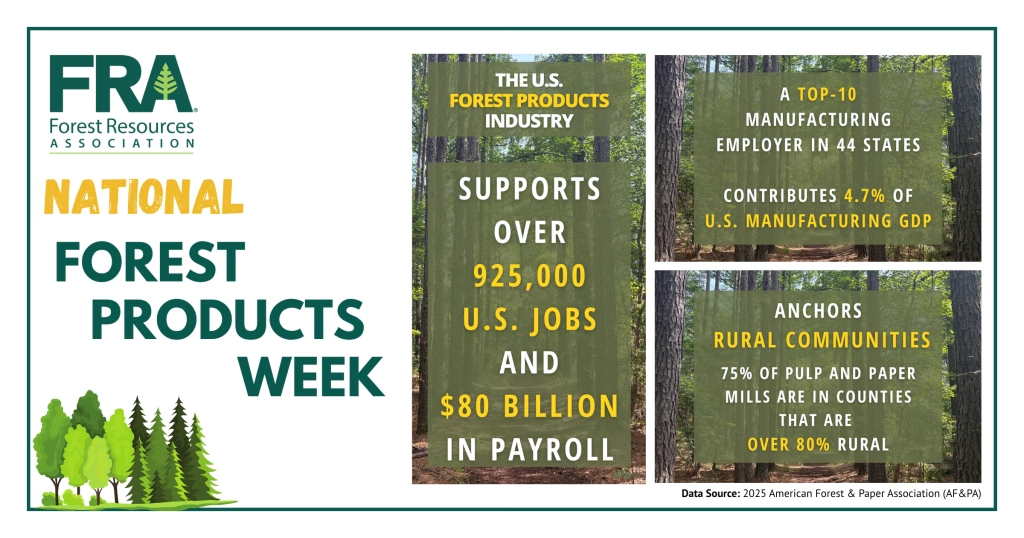Celebrating National Forest Products Week 2025

It’s forest products week, and as I wake up in Maine on an October morning, I am surrounded by forest products. My house, built in 1932, is framed with softwoods and finished with hardwoods. The oak floors have marks left by every family that has called this place home for nearly a century. Multiple books – read, unread, and half-read – sit on the dresser next to my bed, all printed on paper made from wood. One of the books, an early edition of Aldo Leopold’s A Sand County Almanac, is printed on paper from the long-gone Brown Company in Berlin, New Hampshire, where my grandfather once worked. Hardwood furniture – some new, some family heirlooms, some roadside finds – can be found in every room. Heat comes from the wood pellet stove, providing an answer to cool autumn morning air.

It’s easy to identify the many ways that forest products enhance our lives – our shelter, the recordings of our knowledge, and the renewable energy we use for heat and electricity. Products made from wood are all around us, and forest products continue to evolve to meet our needs.
It’s just as important to remember that there is an entire supply chain supporting the growth, harvesting, and processing of forest products, and that this is critical for every product listed above.
- Forest landowners have the patience to grow and manage forestland that takes decades to mature, and implement intermediate treatments throughout the life cycle of the forest. In many regions, landowners invest in replanting after harvest—committing resources today for a return that may not be realized for generations.
- Foresters provide expertise and scientific knowledge in alignment with the landowner’s objectives. Their work supports the ecological and economic value of forests. Responsibilities include planning and executing forest management strategies such as ensuring regeneration, overseeing timber harvests, and monitoring for pests and disease.
- Loggers conduct the timber harvest, implementing a management plan prepared by the forester. Whether using millions of dollars of mechanized equipment or holding a chainsaw, these are the trained professionals who fell a tree, process it into different products (e.g., sawlogs, pulpwood, and slash), and get it roadside.
- Truckers collect the harvested wood and safely transport it to a mill, where it can be processed into products that consumers use.
- Mills utilize the wood as delivered – whether it is veneer logs for plywood or wood chips to burn for electricity or anything in between – and convert the raw material into wood products that we can use in our daily lives – lumber, panels, paper, tissue, energy, and so much more.
It’s easy to admire the beautiful dining room table, the new cross-laminated timber building, and the new home being framed with lumber. It’s just as important to remember that these products are decades in the making, and many people were engaged in the growing, harvesting, and processing that bring forest products into our lives.
Every day, Americans rely on forest products that are made with skill, purpose, and pride—products that come from real places, real people, and real work. During National Forest Products Week, let’s not only recognize the value of the products themselves, but also the people and the working forests that make them possible.

